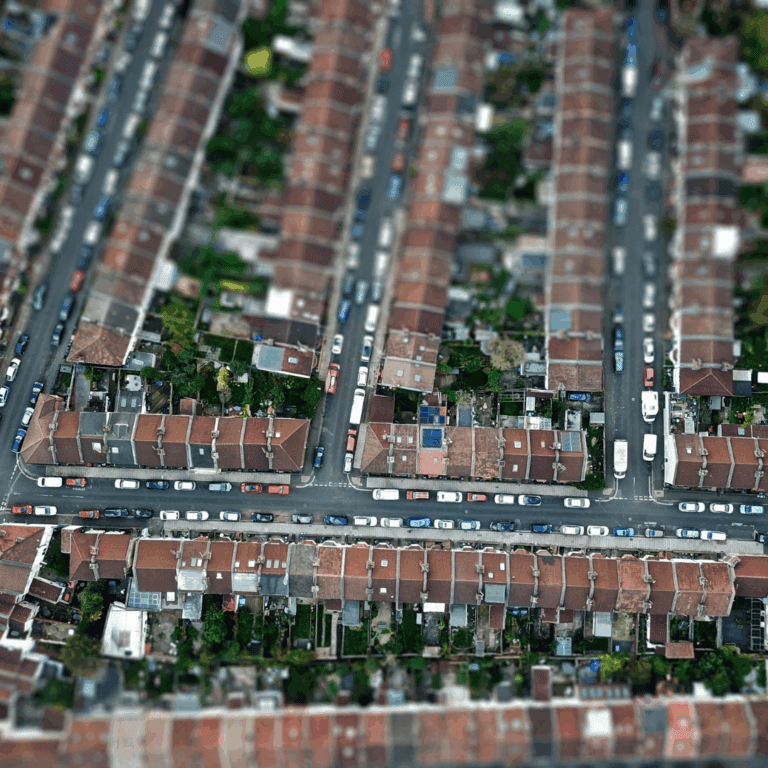Data tools for community engagement
Continuing our Mission Net Zero workshop series, ‘Introduction to Community Action on Climate and Energy’, we gathered online on 26 April to learn about how data can support community engagement, as well as help us uncover more about our localities.
Following on from the first two workshops, which covered community energy and finance and funding options, 12 community organisations came together to hear from experts from the Centre for Sustainable Energy (CSE) about why data is useful, what its limitations are, and the range of tools they can access.
Know your community
Community spaces are invaluable to local residents, but they aren’t always used by everyone in the surrounding neighbourhood, so one thing data tools can tell us is something about the demographic make-up of the neighbourhood as a whole, and whether or not those individuals are involved with any of the activities or services that an organisation offers. This might be useful for making sure that what’s on offer meets local needs, including understanding tenure and income in the neighbourhood to help design community energy projects that work for local people. Based on census data, this can complement any equalities or socio-economic survey that the organisation might undertake.
Know their concerns
In Bristol we also have some useful data from the Quality of Life survey, which tells us about attitudes at ward level to a wide range of issues, and looking at this might add to some of the things we know anecdotally or from real life conversations with our communities about their concerns, or provide a counterpoint, enriching our knowledge about the communities we seek to serve.
This data is gathered annually, and the invitations are weighted to account for areas with lower response rates. The results are based on about 1% of the city’s population, which may seem like a low figure, but the dashboard highlights where lower response rates mean less robust data, meaning that this is still a useful resource. The dashboard is easy to navigate, and shows trends over the last five years. Some of the results challenge perceptions – it can seem as if concern around climate change and biodiversity loss is low, but in reality, figures for these concerns are high across the city.
We also explored the Britain Talks Climate tool, which many workshop participants felt was interesting, but others found reductive. This is another example of the limitations of data tools. Britain Talks Climate’s Seven Segments may feel like they describe stereotypes, rather than real people, but their value is in illustrating that there is a conversation to be had with anyone about climate and nature, whatever their political views, but that some people respond better to certain messages, and that while our opinions may differ, we share many values. As well as segmenting the population, this model highlights the many areas of common ground.
Our guest experts pointed out that these datasets are useful for exploring common views, but that they are just the start – really knowing your community and understanding what matters to them comes from deeper engagement, tailored surveys and longer-term relationships.
Know your location
When it comes to energy projects, there’s more to consider than the level of need and public support. Knowing what the best potential solutions are for a particular geography is also crucial, and there is a wide range of tools that can help with this, such as where building archetypes are most suited to rooftop solar, or where in the city is most likely to be close to the growing District Heat Network.
Data can also tell us what the major risks are in any given location, such as flooding, or heat vulnerability, which can be combined with data about the age profile of residents, which might suggest a higher need for cool spaces in extreme heat. Community organisations have a role to play in creating strong and resilient neighbourhoods, so being aware of what the risks might be is important.
This information can also be layered up to support development of energy projects that will appeal to people. Participants went through a case study where suitability for rooftop solar was combined with the Britain Talks Climate mapping tool and information about tenure type to predict where an offer for group purchasing of solar installation might be most successful.
Our guest experts were clear to point out that all these tools have their limitations, but that together they can help form a picture that can be used to inform the services community organisations offer, to tell funders about our communities, and to plan energy projects.
Our final workshop in this series takes place on 3 June, where we’ll be hearing from Southmead Development Trust about their journey from developing a community climate action plan to participating in the Transforming Energy Together project, supported by Centre for Sustainable Energy, demonstrating the potential for community organisations to lead decarbonisation projects that respond to their communities. We’ll also be hearing from Grace Reid, the Inclusion Associate on the project, to hear about how we can ensure that the transition to a zero-carbon city can bring us closer to a socially-just city where all our communities and nature thrive.
This workshop series is part of Mission Net Zero and is funded by Innovate UK’s Net Zero Living programme. Bristol Climate & Nature Partnership, Centre for Sustainable Energy, Bristol Energy Network, and Bristol City Council are working together to deliver this workshop series.
Share to
